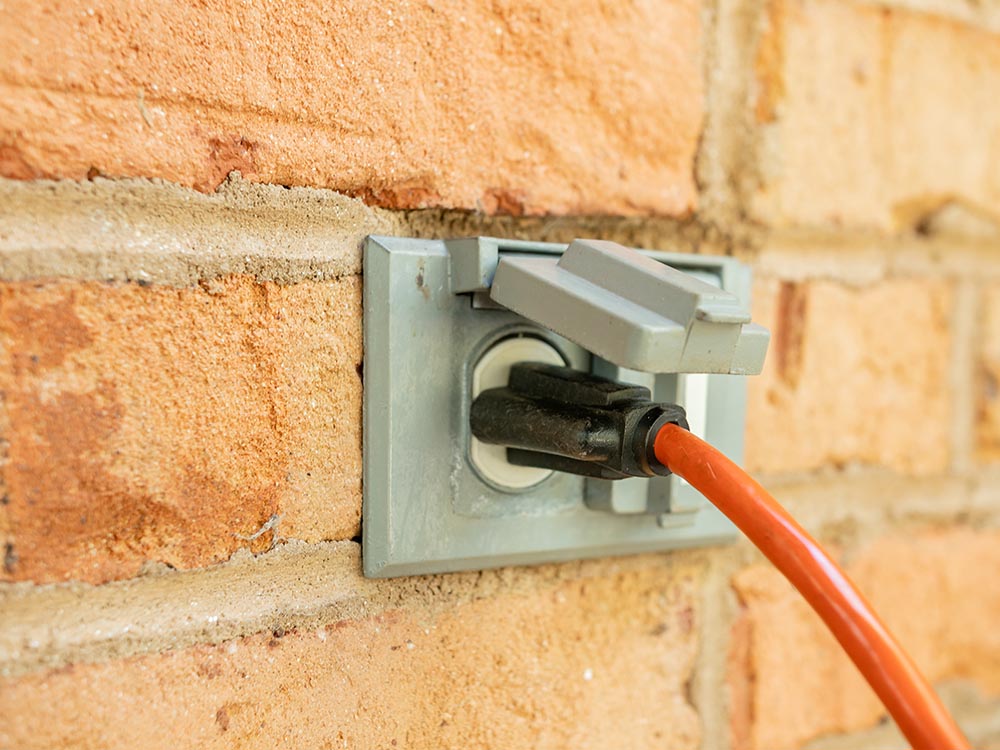Having the ability to run power outside is crucial but at the same time, you also need to know how to safely use extension cords outside to avoid any catastrophic accidents. An extension cord is an essential tool for any household as you can direct power outdoors so that you can trim the bushes, power a bounce house for a children’s party or provide lighting for an evening shindig. While the use of an extension cord is pretty straightforward, there are precautions that you must observe if you want to safely use extension cords outside. Read on below to find out the most important ones.
1) Use extension cords that are made specifically for outdoor use
Always make sure that you are using extension cords that are specifically made for use outdoors as these are made out of materials that can withstand moisture, temperature changes, the sun, and even foot traffic. You must select the appropriate cord for the task at hand. Be aware that cords are not one-size-fits-all and you must pick a cord that can take on the wattage of all connected devices. Bear in mind that the larger the wire is, the more current it is capable of handling.
An outdoors-use rating would mean that the cord has added layers of shielding to insulate and safeguard the fragile wires inside from freezing temperatures, water, and snow. The additional layers of shielding guard the wires from suffering any damage, which may cause result in an accident.
Extension cords that are made for outdoor use are often robust so that they could withstand being battered by the elements. Although outdoor extension cords are tough, you still must not leave them outside for more than a day or two. Leaving this outside for an extended period will make your cord susceptible to breaking down, which can result in sparking, fire, and shock. And lastly, never use indoor extension cords outside as these aren’t made for rugged use.
2) Check your outside receptacle
Another useful tip on how to safely use extension cords outside is to ensure that the receptacle outside your house is safe for use. The receptacle must be equipped with a Ground Fault Interrupter (GFI) or Ground Fault Circuit Interrupter. For those that do not know what this is, the GFI is a safety outlet that has been made to avert disastrous electrical accidents such as shocks and short circuits that can lead to fires. The GFI frequently tracks the amount of electric current flowing through a specific circuit. The outlet is designed to detect any loss of current and immediately trip the circuit.
To check for the GFI, find all the receptacles outside your house and look for a small button on each one of them. This button can be pushed to reset the receptacle. Make sure that this button is working the way it should. Not all models of receptacles are made alike. The particular make of receptacle on your property might have its GFI button at the junction of the breaker box. The GFI button may also be found in the power room or any other room in your house, like the kitchen. However, you must find the GFI and test its functionality before you start using your extension cord outside.
3) Plug the extension cord into an outlet with the least traffic
If it’s possible to do so, you should run the extension cord through areas where there’s not a lot of traffic. This is an important safety tip as this can minimize the risk of fall and tripping accidents.
Working with extension cords can be tricky at times. And if you are not sure about what you are doing, it is best to call in a professional electrician. Get in touch with Fusion Electric, a locally owned and operated company in Overland Park, that is insured to serve the entire Kansas City Metro area. Visit their website at https://www.fusionkc.com/.


